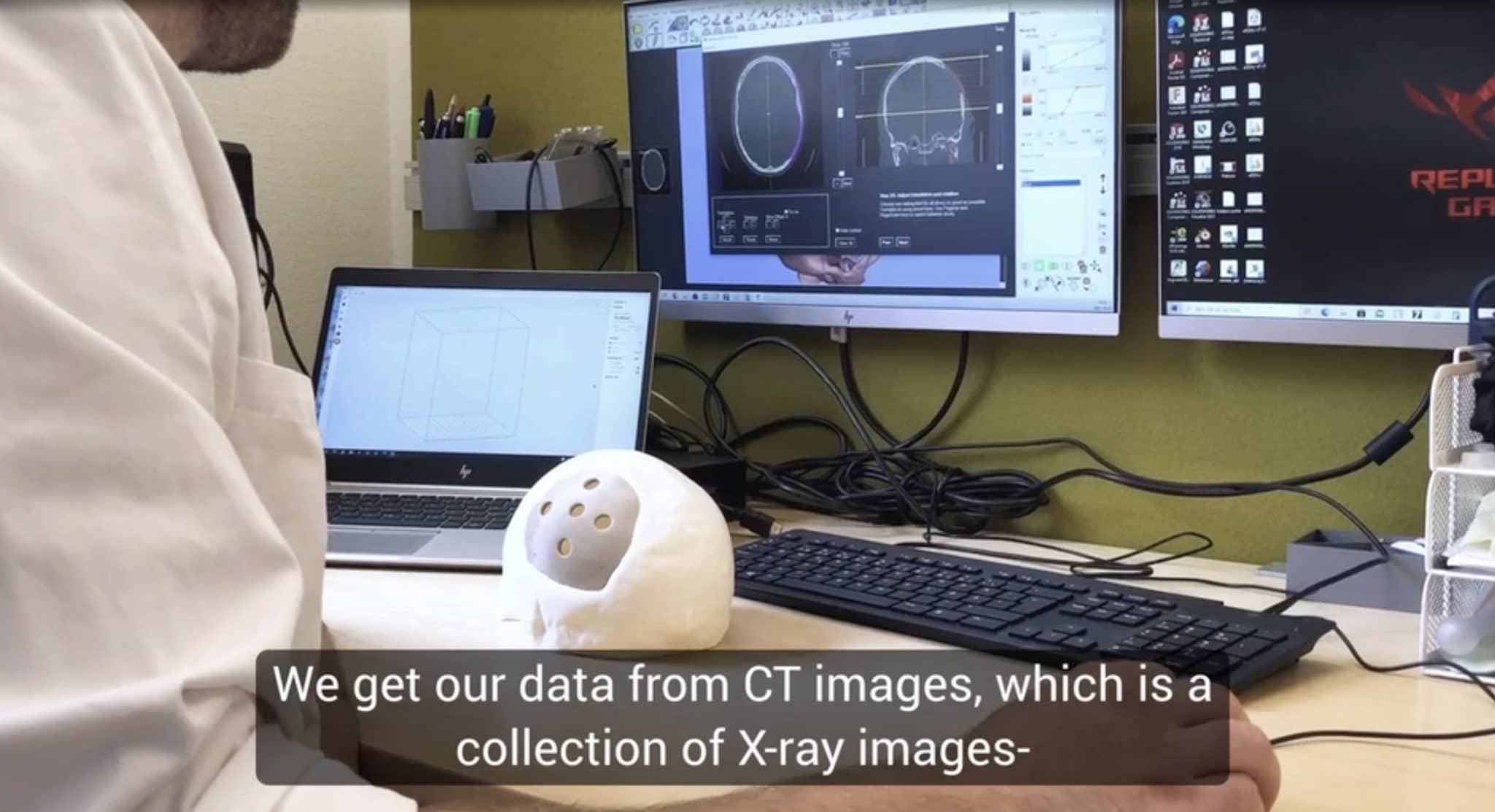Skåne University Hospital is the first hospital in the world to 3D print a PEEK cranioplasty implant on site for it to be successfully received by a patient. The implant, based on Evonik‘s VESTAKEEP PEEK biomaterial filament, was 3D printed using the ApiumM220 3D printer from the German company Apium. While this is the first reported case of an implant to be 3D printed and implanted in the same hospital location, other companies, such as Lima Corporate, are currently developing on-site 3D printing capabilities for metal implants.
“We are currently evaluating a method for printing cranioplasty implants that can be used in surgeries. With this method, we will have the entire chain, from designing and printing implants to fitting and surgery, in-hospital”, said Einar Heiberg Brandt, medical engineer in Clinical Physiology and Nuclear Medicine at Skåne University Hospital and Wallenberg Centres for Molecular Medicine.
With the help of CT images, an implant is designed and 3D printed with a specifically adapted and well-tested biocompatible plastic material. The ApiumM220 enables 3D printing of high temperature PEEK materials so that the implant can then be sterilized at the hospital’s sterile center before it is ready for surgery on the patient.
Manufacturing on Demand
“As far as we know, we are the world’s first to make 3D implants entirely in a hospital, which means that the implants will be better adapted to the patients, right from the start. This will lead to faster surgeries and fewer complications”, Einar Heiberg Brandt says. Recently, the first surgery was performed with a hospital-printed cranioplasty implant. The surgery was part of a ‘one-size-fits-all’ study.
“The surgery was successful. The patient is a 40-year-old woman who, after an accident, needed a cranioplasty. The study hopes to show that the surgeries can be carried out more quickly and that the risk of infections is reduced. Specifically adapted implants also reduce the risk of skin damage and enable our patients to recover faster”, comments Peter Siesjö, consultant in Neurosurgery and Pain Rehabilitation at Skåne University Hospital and professor at Lund University.
Some of the reasons why a patient needs cranioplasty are injuries, tumors and infections. Einar Heiberg Brandt identifies many possibilities with the new method: “This is only the beginning—she said. There are no barriers to writing other types of bone implants.”
* This article is reprinted from 3D Printing Media Network. If you are involved in infringement, please contact us to delete it.
Author: Davide Sher



Leave A Comment